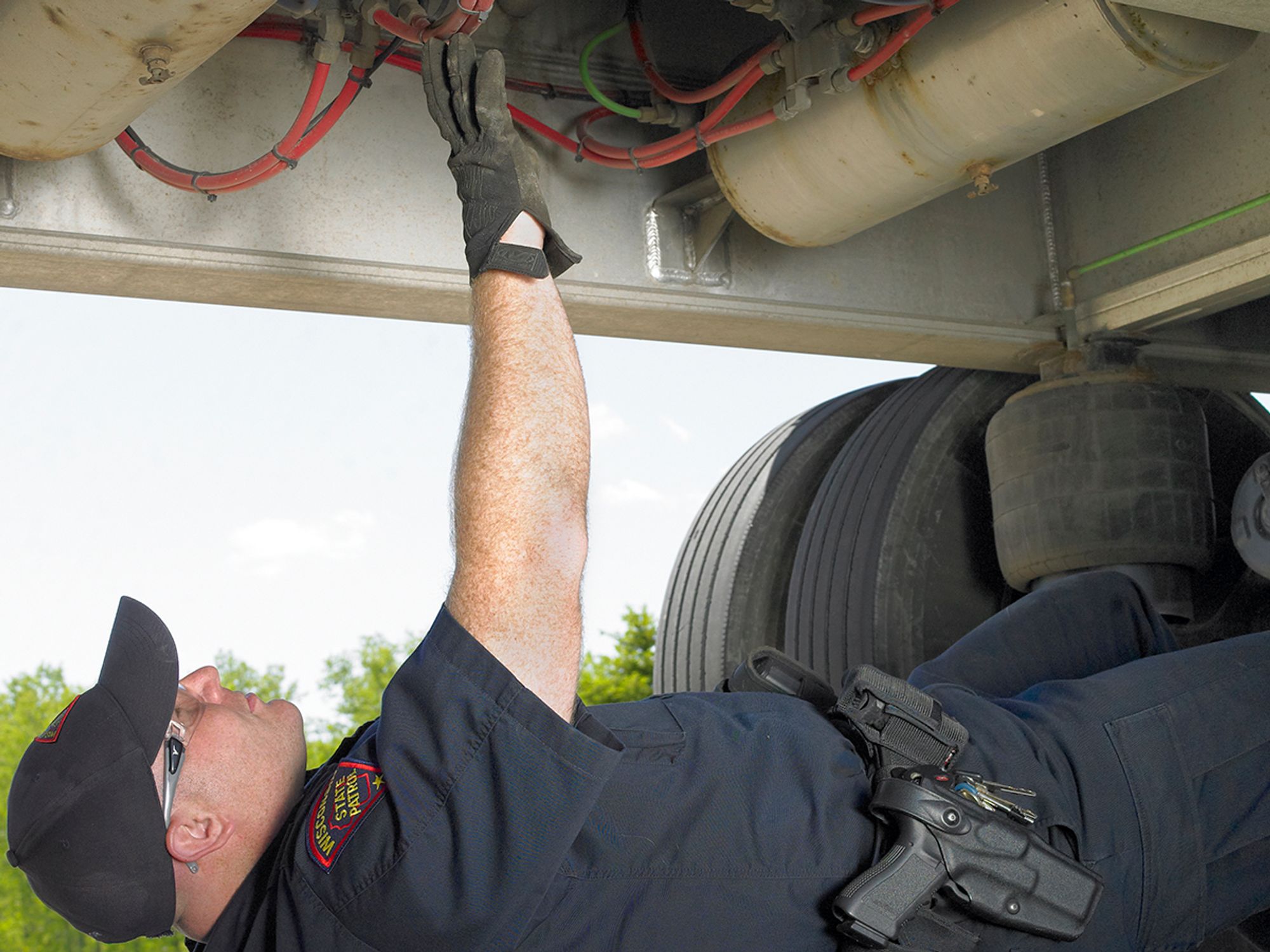Roadside inspections

There are more than 3.5 million roadside inspections conducted annually by agents of the Federal Motor Carrier Safety Administration (FMCSA). These agents include FMCSA employees and state, county, and local law enforcement officers trained under the FMCSA’s Motor Carrier Safety Assistance Program (MCSAP). These inspectors have the authority to perform inspections of a driver and a motor carrier’s vehicles and intermodal equipment while in operation — being driven on a highway. A highway is any place to which the motoring public has unrestricted access. (396.9)
The inspection regulations also authorize these same agents to declare a vehicle out of service if continued operation of the vehicle is likely to cause an accident or breakdown due to a safety-related defect or deficiency.
A roadside inspection begins with the officer selecting the driver or vehicle for the inspection and then choosing a location. Common reasons drivers and vehicles are selected include:
- A visible violation
- A driving violation
- A high Inspection Selection System (ISS) score
- Involvement in an accident
- Random selection
Let’s look at each of these reasons for selection:
A visible violation — A trained roadside inspection officer evaluates a vehicle by looking at it. If a visible violation is seen, the officer is likely to select the vehicle for inspection. Examples of violations that will trigger an officer’s interest include a light not functioning, missing conspicuity tape or reflectors, a flat or otherwise visibly defective tire, improper cargo securement or loose securement devices, a missing or unreadable company name or DOT number, and a damaged or overly tinted window or windshield.
A driving violation — Many officers who conduct roadside inspections also conduct patrols and will pull commercial vehicles over for traffic violations. In these scenarios, the officer will conduct, at a minimum, a driver-only inspection. Examples of traffic violations that can lead to a roadside inspection include speeding, failing to obey a traffic control device, following too close, illegal parking, and improper lane use or lane change.
A high ISS score — Officers use an electronic system called the Inspection Selection System (ISS) to help locate poor-performing carriers for inspection. ISS uses a carrier’s Compliance, Safety, Accountability (CSA) BASIC scores to generate a score (from 0 to 100) and a recommendation based on that score.
The three recommendations are Pass, Optional, or Inspect. If the carrier has any BASIC scores over the CSA threshold, the carrier will receive, at best, an Optional recommendation. If the carrier has multiple BASICs over the threshold, the carrier will likely have an Inspect recommendation. A carrier typically has an Inspect recommendation if FMCSA has little or no data on the company.
Involvement in an accident — In most jurisdictions, any time a commercial vehicle is involved in a crash that meets specific criteria, the driver and vehicle must be inspected. In the case of a severe accident where the driver is not available or the inspection is done later, a vehicle-only inspection will be done.
Random selection — In some situations, the inspection facility will select vehicles randomly for inspection. This can also happen if the road officer or the officer at the fixed facility (scale or inspection area) has not seen a vehicle with a violation for a while.
